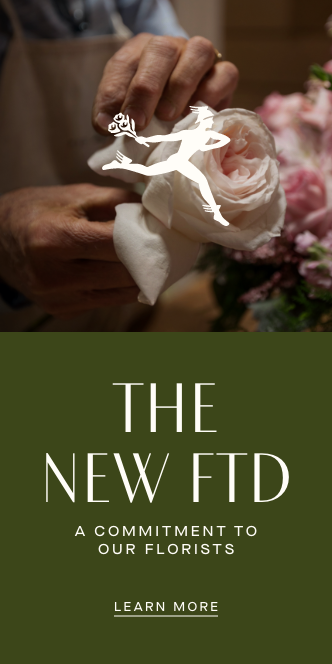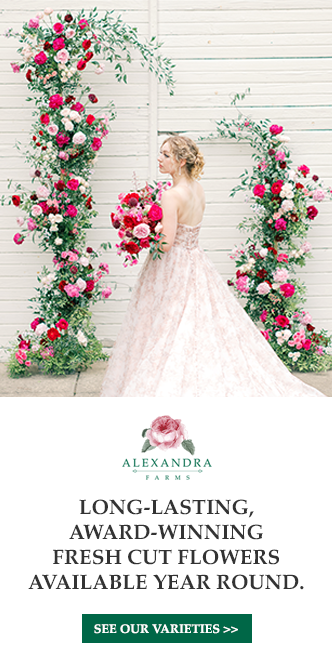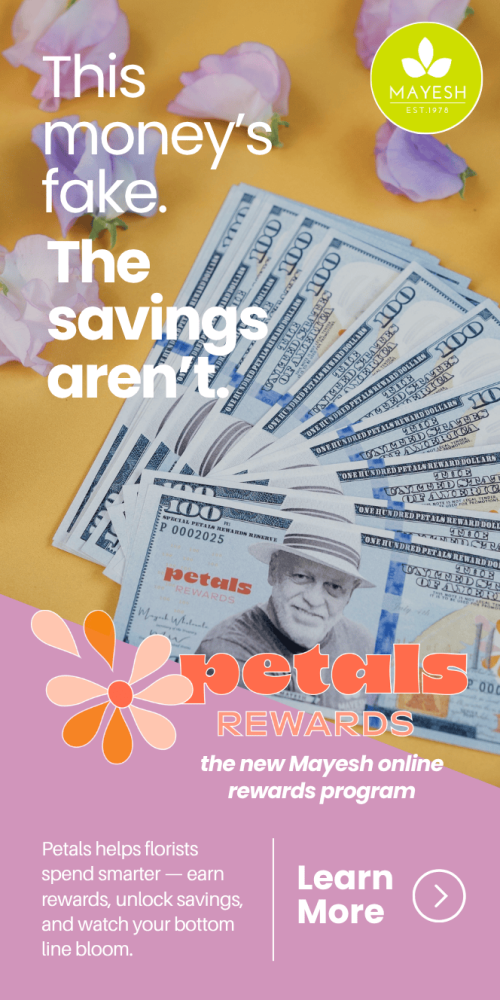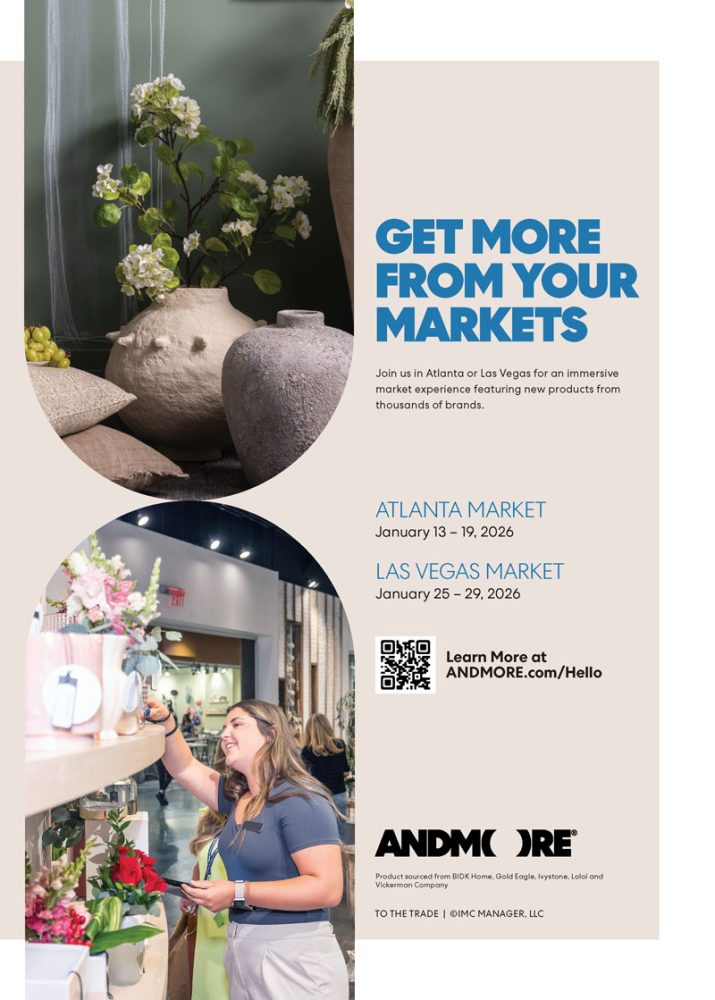THE EARTH IN HER HANDS is a beautiful and empowering book introducing 75 inspiring women working in wide-reaching fields that include botany, floral design, landscape architecture, farming, herbalism and food and social justice.
Author Jennifer Jewell spent one year conducting interviews with women who she calls “influencers who are creating change from the ground up.” Rich with personal stories and insights, Jennifer’s portraits reveal a devotion that transcends age, locale or background, reminding us of the profound role of green growing things in our world—and our lives.
Full disclosure, I am honored to be one of the featured voices in this book, so my interest in discussing this project with Jennifer may seem self-serving, although I contend it’s not! Rather, I want to express my admiration for The Earth in Her Hands here with you. It is such a privilege to be included with so many incredible women leaders, change agents and pioneers in the horticulture profession.
I’m happy to share here an excerpt from my recent interview author Jennifer Jewell.

About Jennifer: Jennifer Jewell is a gardener, garden writer, and gardening educator and advocate. Since 2016, she has written and hosted the national award-winning, weekly public radio program and podcast, Cultivating Place, a coproduction of North State Public Radio in Chico, California. Particularly interested in the intersections between gardens, the native plant environments around them, and human culture, she is the daughter of a garden- and floral-designing mother and a wildlife biologist father. Jennifer has been writing about gardening professionally since 1998, and her work has appeared in Gardens Illustrated, House & Garden, Natural Home, Old House Journal, Colorado Homes & Lifestyles, and Pacific Horticulture.
Jennifer is our capstone speaker for the 2020 Slow Flowers Summit, where she will present “The Power of Women Working in the World of Plants.” Her next book, Under Western Skies: Visionary Gardens from the Rocky Mountains to the Pacific Coast, will be published in 2021.
DP: What was the “brief” when you started this project? What did Timber Press ask when they commissioned you as the author?
JJ: They asked if I would be interested in writing a book on women in horticulture and I said I would. Their only request was that it not be about dead, white English women. I said, “great, because I would have no interest in writing about them!” I came up with most of the parameters for selecting the women profiled.
DP: Why was it so important to feature women of note in their fields?
JJ: It’s amazing to me when you look at all the glass ceilings across the different industries: Environmental science, botany, floristry, agriculture, writers, photographers, landscape architect. There are a couple categories in which women have been longtime leaders or equal influencers. Floristry is one of them, but in all of the others — like leaders of botanic gardens, leaders in public policy, plant breeding, plant hunting — these are all very male dominated and have been forever.
 DP: Let’s talk about floristry, since that subject is a top interest of Slow Flowers Journal readers. You have featured so many wonderful voices of influence in our profession — including (alphabetically) Erin Benzakein, Ariella Chezar, Philippa Craddock, Fionnuala Fallon, Lorene Edwards Forkner, Christin Geall, Amy Merrick, Françoise Weeks, among others. What specific observations can you share about our community of floral leaders?
DP: Let’s talk about floristry, since that subject is a top interest of Slow Flowers Journal readers. You have featured so many wonderful voices of influence in our profession — including (alphabetically) Erin Benzakein, Ariella Chezar, Philippa Craddock, Fionnuala Fallon, Lorene Edwards Forkner, Christin Geall, Amy Merrick, Françoise Weeks, among others. What specific observations can you share about our community of floral leaders?
JJ: I am impressed with the economic drivers that women have been in the work of floristry in the past 25 years. And how that has radiated out into thriving, flexible, local communities and economies. The other one is the intellectual, economic and cultural leadership that we are seeing from these women in floristry. Of all the areas of horticulture that I covered in the book, floristry is the one that has endured some of the most persistent perceptions of being unnecessary, of being very lovely but a little bit unsubstantial and very pretty but not very priceless.

 DP: It sounds like you disagree with that assessment.
DP: It sounds like you disagree with that assessment.
JJ: The women in floristry who I interviewed, like you, Erin, Ariella and Christin, Françoise and Fionnuala, are driving economic forces that have lifted thousands of women primarily into small business across our country and others. It is profound and incredibly powerful. If we could have a map of how many family and local economies have been influenced by you being the leaders that you have been, it would blow people away, Debra.
DP: You also highlighted botanical, landscape and interior photographer Ngoc Minh Ngo, whose recent books are all about floristry. Why did you select her?
JJ: First of all, I’m just in love with her work. I knew I wanted to have Ngoc Minh Ngo in the book because of her aesthetics and her deep poetic attachment to places and flowers. In her interview, what became clear was that as an interior photographer who loved flowers working in New York in the 1990s, she would see just any old flower thrown into a shot – without thought to what flowers, when, where and why. It bothered her that flowers were being treated as accessories or objects with no meaning. One of the impetuses for her first book, Bringing Nature Home, was this idea that flowers have their own narrative and season. That they read as important in the photographs seen in these lifestyle magazines. Ngoc expanded what we are asking of the horticultural world and what we are asking of gardeners to expect out of life, how we are asking people to think about and understand the plants around them.
 DP: You also explored how garden designer Kate Frey interprets flowers in the larger, more holistic context of our environments. Can you discuss her unique influence on horticulture?
DP: You also explored how garden designer Kate Frey interprets flowers in the larger, more holistic context of our environments. Can you discuss her unique influence on horticulture?
JJ: Kate’s work in habitat building is fascinating. Her book, The Bee-Friendly Garden, explores not just bees but all of insect life and biodiversity. We say the word ‘floral design’ and we think ‘decorative’ but it is so much more than decorative. We can’t really live without flowers, but it is the source of seed set, it’s pollinator food and forage. Flowers are an essential element in this chain of supply and demand for biodiversity in our world, and Kate is a huge advocate communicating this truth.
 DP: What are some of the threads that connect the stories of the women you profile?
DP: What are some of the threads that connect the stories of the women you profile?
JJ: I knew that women’s names and work were influential. But when I started to put the whole book together, I started to see the bigger threads come out, including one of leadership from a community-basis, based on personal care and concern. It shouted at me. That is what I’m talking about in my presentations about The Earth in Her Hands: This power of female leadership models that are different than most versions of male leadership models we’ve been shown, even now, even today.
DP: What motivates these women?
JJ: So many of their careers were kick-started by something they cared about deeply and personally — that then radiated outwards. I observed two things: First, Investment and concern for the community and an ingrained sense of responsibility for both personal and wider community; and second, a seed or germ of personally caring at the heart of many of these women’s work. That is infused in the leadership they bring to their own businesses as they model and mentor the people they work with and who go on to grow in the profession as well.
 DP: Can you highlight how this looks in real life?
DP: Can you highlight how this looks in real life?
JJ: I look at the women who have practices or offices, like landscape designers Jinny Blom and Julie Moir Meservy. They were clear on the ways in which there had been societal obstacles or hurdles for them as young women to work in male-dominated offices in terms of basic life things – say like having kids home sick, to say nothing of breastfeeding or having your period. They’ve worked very hard to set up their offices and their practices to be women-friendly, and to have hours and expectations that didn’t just rely on the one female office manager tidying up the kitchen. It was really important to them to make it easier for the women coming up behind them to be who they were and to be able to thrive in their work. So they are modeling that value to everyone who has worked for them or interned with them to take that out into the world. To me, those threads are profoundly impactful in our culture.
 DP: Would you say that having a satisfying professional path trumps a well-paying job for most of the women you interviewed?
DP: Would you say that having a satisfying professional path trumps a well-paying job for most of the women you interviewed?
JJ: A paycheck isn’t necessarily the initial driver. What’s interesting is that once each woman found the thing she wanted to do, there are very similar journey-stories for each in terms of knowing what that seed of inspiration was and then exploring different avenues to find some kind of sweet spot between their passion and economic sustainability in order to do their work with integrity. For almost everybody, there was a narrative such as: “Try this way; no not that. Yes, this way. Okay, that seems better. That’s a little more income.” It’s a patchwork and very few have one income stream, but instead three to five income streams.
DP: What are other important lessons of The Earth in Her Hands?
JJ: Similar to themes in my podcast interviews, one theme is diversity. We have got to stop just interviewing middle class, middle-age, white women. Period. This is a tricky conversation and God knows, I’m sure I get it wrong half the time. But we just have to keep having it. I’m sure this resonates with you, but most of my audiences look just like me, and I have to have my own integrity about telling the part of this story that is mine – not speaking for women of very different backgrounds than mine, while still trying to move this larger cultural conversation about racism and exclusion in our horticultural fields forward. So I try to frame my conversations around my experience, “This is my experience of having a blind spot (racism inherent in our horticultural world) exposed for me. This is how it felt and this is how great it feels to be exploring diversity and opening all of these conversations about gardening and plant love up to the ways in which people of all backgrounds engage and have always engaged in these fields.”
DP: It’s really clear in The Earth in Her Hands that you believe the green profession has been built on the intellect and skills of women. And that you believe the next wave in female leadership in our professions is to support more inclusivity and diversity.
JJ: Yes, I think that the reason we got to this point of a mainstream perception that gardening is primarily a middle class white leisure activity is multi-faceted. That is in part to do with the rise of mainstream media and glossy magazines. Because we began to learn about gardening not from our neighbors or our mothers or our elders in the community, but instead from printed sources. At some point after 1950s where leisure time increased and you saw these glossy lifestyle magazines rise, all of a sudden how your garden looked began to be more and more important. It didn’t matter that our gardens basically look good sometimes or they look good in places. Few home gardens are going to make the cover of House & Garden or Gardens Illustrated. But people became so image-driven that we started to only see a certain segment of the gardening world. Then it started to feel like only wealthy white people gardened because they were the only ones who had resources to make a garden that could fit on a magazine cover. The media focus and therefore the cultural message got narrower and narrower. But the fact is, everybody gardens. Every culture gardens. I love that in Cultivating Place audio is so much stronger than the printed page, giving us the ability to talk about any garden. It looks good because we know it looks beautiful to our eyes. It doesn’t have to fit into a two-dimensional image frame.
 DP: Thank you, Jennifer. I feel like you were the best person to write this book because you’ve walked in this same path as many of the women you interview. Obviously, you had a love of horticulture as a mutual connection, but I think more importantly, it’s because we are all women.
DP: Thank you, Jennifer. I feel like you were the best person to write this book because you’ve walked in this same path as many of the women you interview. Obviously, you had a love of horticulture as a mutual connection, but I think more importantly, it’s because we are all women.
JJ: There was a cultural universality of the female mode. I think there may have been different lenses if I had moved into very different cultures, but that was way outside of my wheelhouse, especially given one year to produce The Earth in Her Hands. It was a great book to work on and it gave me all kinds of talking points that are pro-female around resourcefulness and responsiveness. It deeply re-energized my humanity and my feminist side.
SOURCE: http://slowflowersjournal.com/index.php/2020/04/11/book-review-the-earth-in-her-hands-and-a-conversation-with-author-jennifer-jewell/























